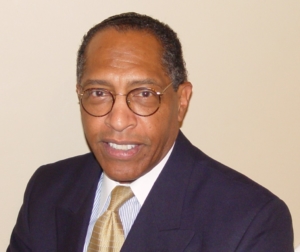
Diffusion of news outlets has increased, not diminished the need for media relations, as the digital era has expanded the range of communications skills required to deal effectively with contemporary news reporters. Meanwhile, the changing news ethos also has reinforced the value of many time-tested media relations practices.
The technologies of media relations have evolved, but the relationship between a reporter and a news source remain largely unchanged. The bag of tricks for today’s media relations professionals has expanded to include video production, podcasting, videoconferencing and live streaming. But old tricks still have value, too, such as building rapport with reporters, speaking clearly and preparing content that helps reporters tell their stories.

“Genuine relationships built on mutual trust can be nurtured if reporters know they can depend on you to deliver helpful, useful material in a timely manner,” according to veteran communicator Peter Woolfolk in a recent ragan.com interview. “Building relationships – and anticipating needs – are still the name of the game for media relations.”
As Woolfolk suggests, there still isn’t a better way to pitch a story or provide useful background than one-on-one contact with a reporter. “My very first tip for media relations success is, when possible, develop a relationship with the reporter before you ask for something,” he says.
News outlets today operate on multiple platforms with 24/7 news cycles, creating a voracious appetite for content, an opportunity that savvy media relations professionals can help to satisfy. That’s where video, podcasting, video conferencing and live streaming as relatively new ways of delivering content for news media use come into play. Proficiency in generating or overseeing digital production must be matched by adherence to journalistic standards for substance and style or else the work product will get tossed as puffery.
B-roll video footage, photos and graphs remain valuable assets to slip to reporters as context or background for their stories, which routinely appear in combinations of print, online and on-air content. Prepared statements still have their place in media relations, but reporters prefer interviews, which are now easier to manage – and harder to decline – with the ubiquitous use of videoconferencing.
Zoom offers an opportunity for virtual news conferences that can be scheduled quickly with a lot less folderol than an in-person press event. However, press events can be tricky and unpredictable, so old-fashioned caution remains the order of the day. Granting exclusive access or a succession of one-on-one interviews can generate better results with less risk.
Building relationships – and anticipating needs – are still the name of the game for media relations.
Once upon a time, media relations people cut “actualities” – short audio tapes – to send to radio stations, especially ones in smaller markets with limited news staffs. Podcasting takes actualities to a whole new level by producing a complete narrative, as opposed to a short statement. The same dynamic works for short videos posted on YouTube or livestreaming on Facebook that enable a news generator to convey a more complete point of view, while providing reporters a good source of newsy clips.
Media relations professionals form opinions about reporters based on how they speak. The reverse is true as well, which is why media spokespeople need to hone their speaking skills. “Being comfortable delivering your message enhances the respect people will have for you, and it certainly lifts your self-confidence, too,” Woolfolk says. It doesn’t hurt to speak crisply and clearly to deliver key messages, while avoiding slang or excessive use of “like” and “literally”. Media training can help.
Because many of the new communications tools can seem foreign to old-timers in the profession – and their clients, it is smart to think of media relations teams that blend experience with technology skills. A team approach can avoid awkward missteps, such as pitching a story to a reporter than isn’t in their beat or pushing amateurish video content. A seasoned pro is in a better position than a younger professional to persuade a client to drop a bad, counter-productive idea. Younger pros have a better grip on the advantages and pitfalls of social media.
A team approach also is valuable when a media relations project is interrupted by a crisis event. Crisis communications counselors bring a different mindset and skillset to responding to a real-time crisis with swarming media, when there is no need to seek attention, just provide credible answers to concerns, fears and outrage.
Looking back over his long career in communications, Woolfolk advises, “Don’t fear failure.” Mistakes can be teachable moments that fuel “growth, character and fortitude” in a media relations career, which isn’t one of those professions dying off any time soon.




